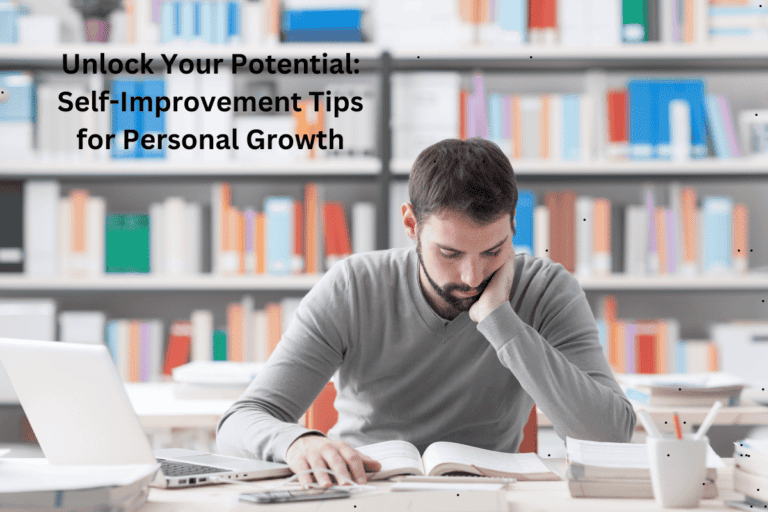Self-Care and Resilience Strategies for Teachers
Picture this: you're a teacher, juggling lesson plans, grading papers, and managing a classroom full of energetic young minds. It's no secret that teaching can be demanding, both physically and emotionally. But amidst the chaos, have you taken a moment to check in with yourself?
In this discussion, we will explore self-care and resilience strategies specifically crafted for teachers like you. Discover practical ways to prioritize your well-being, build emotional resilience, and foster a healthy work-life balance.
So, are you ready to unlock the secrets to thriving as an educator? Stay tuned as we unravel the key to your success in the classroom and beyond.
Key Takeaways
- Recognize personal limits and set boundaries to avoid burnout
- Prioritize physical well-being through exercise, healthy eating, and adequate sleep
- Cultivate emotional resilience through mindfulness techniques and self-care activities
- Build supportive relationships with colleagues, students, and parents to foster a sense of community and support student success
Recognizing and Setting Boundaries
Recognizing and setting boundaries is essential for teachers to prioritize their well-being and maintain a healthy work-life balance.
As an educator, it's easy to get caught up in the demands of the job and neglect your own needs. But by recognizing your personal limits and setting healthy boundaries, you can protect your physical and mental health, ultimately becoming a more effective teacher.
Firstly, it's important to recognize your personal limits. Teaching can be emotionally and mentally taxing, and pushing yourself beyond your limits can lead to burnout. Pay attention to signs of exhaustion, stress, or frustration, and don't be afraid to take breaks or ask for support when needed. Remember, taking care of yourself isn't selfish; it's a necessary part of being able to care for your students.
In addition, setting healthy boundaries is crucial. This means establishing clear expectations with colleagues, students, and even parents. Communicate your availability and establish designated times for work and personal life. By setting boundaries, you create a structure that allows you to focus on your own well-being and recharge outside of school hours.
Prioritizing Physical Well-being
To prioritize your physical well-being as a teacher, it's crucial to establish healthy habits that support your overall health and vitality. Taking care of your body not only benefits you but also enhances your ability to effectively engage with your students. Here are some key strategies to consider:
- Incorporate regular exercise routines into your daily schedule. Whether it's a brisk walk, a yoga session, or a workout at the gym, physical activity helps reduce stress, boosts your mood, and increases your energy levels. Find activities that you enjoy and make them a priority.
- Practice healthy eating habits by fueling your body with nutritious foods. A balanced diet rich in fruits, vegetables, lean proteins, and whole grains provides the necessary nutrients for optimal physical and mental functioning. Plan your meals ahead of time, pack healthy snacks, and make mindful choices when eating out.
- Prioritize sleep and rest. Getting enough sleep is vital for your body's recovery and rejuvenation. Aim for seven to eight hours of quality sleep each night, and create a bedtime routine that allows you to unwind and relax.
- Stay hydrated throughout the day. Drinking an adequate amount of water helps maintain your energy levels, supports brain function, and aids in digestion. Keep a water bottle with you and make it a habit to sip water regularly.
Cultivating Emotional Resilience
Now that you have established healthy habits to prioritize your physical well-being, it's important to focus on cultivating emotional resilience as a teacher. Teaching can be a demanding and stressful profession, and it's crucial to develop strategies that allow you to effectively manage your emotions and bounce back from challenging situations.
One powerful tool for cultivating emotional resilience is mindfulness. Mindfulness techniques, such as deep breathing exercises and meditation, can help you stay present in the moment and reduce stress levels. Taking a few moments each day to practice mindfulness can have a significant impact on your emotional well-being.
Emotional regulation is another key aspect of building resilience. It involves recognizing and understanding your emotions, as well as finding healthy ways to express and manage them. Developing emotional regulation skills can help you respond to difficult situations with composure and maintain a positive mindset.
In addition to mindfulness and emotional regulation, it's essential to prioritize self-care. Make time for activities that bring you joy and relaxation, such as hobbies, exercise, or spending time with loved ones. Remember that taking care of yourself isn't selfish, but rather a necessary step towards building emotional resilience.
Nurturing Social Connections
Building supportive relationships is essential for your well-being as a teacher. By connecting with colleagues, you can share experiences, seek advice, and find understanding in the challenges you face.
Fostering a sense of community and cultivating meaningful connections won't only enhance your resilience but also create a support system that can uplift and sustain you throughout your teaching journey.
Building Supportive Relationships
Cultivate meaningful connections with others to support your well-being and resilience as a teacher. Building supportive relationships can have a profound impact on your ability to navigate the challenges of the profession.
Here are some strategies to help you foster strong connections with your colleagues and students:
- Building trust: Establish an environment of trust by being open, honest, and reliable. Share your vulnerabilities and listen to others without judgment.
- Establishing rapport: Take the time to get to know your students and colleagues on a personal level. Show genuine interest in their lives and experiences.
- Collaborating and networking: Seek opportunities to collaborate with other teachers and professionals in the education field. Share ideas, resources, and support to enhance your teaching practice.
- Seeking mentorship: Find a mentor who can provide guidance, support, and encouragement. A mentor can help you navigate challenges and grow both personally and professionally.
Fostering Community Connection
To further enhance your well-being as a teacher, it's crucial to foster community connection and nurture social connections. Building a strong community within your school can have numerous benefits, both for you and your students.
Research shows that when teachers and students feel a sense of belonging and connection, it can lead to increased motivation, engagement, and overall well-being.
So how can you foster this sense of community? Start by fostering connection among your colleagues. Engage in regular collaboration, support each other, and create opportunities for shared experiences.
Additionally, make an effort to build relationships with your students and their families. Show genuine interest in their lives, listen actively, and create a safe and inclusive classroom environment.
Cultivating Meaningful Connections
By nurturing meaningful connections with those around you, you can cultivate a supportive and enriching environment for both yourself and your students. Building friendships and forming connections not only benefit your personal well-being but also have a positive impact on your classroom dynamics and student outcomes.
Here are some strategies to help you cultivate meaningful connections:
- Take the time to get to know your colleagues and fellow educators. Engage in conversations beyond the classroom and find common interests or hobbies.
- Attend professional development workshops and conferences to meet other educators who share your passion for teaching. These events provide opportunities for networking and building connections.
- Join online communities and education forums where you can connect with educators from around the world. Share ideas, seek advice, and offer support to build a global network of like-minded professionals.
- Foster relationships with parents and guardians by inviting them to participate in classroom activities or organizing parent-teacher events. These interactions can strengthen partnerships and create a sense of community.
Practicing Mindfulness and Stress Reduction
When it comes to practicing mindfulness and reducing stress, remember to take a deep breath and release. By focusing on your breath and being present in the moment, you can cultivate a sense of calm and clarity.
Research has shown that mindfulness techniques can help teachers manage stress, improve well-being, and enhance their ability to cope with challenges.
Breath and Release
Practicing mindfulness and stress reduction through breath and release can be a powerful tool for teachers to enhance their self-care and resilience. When you let go of the pressures and worries that weigh you down, you create space for finding peace within yourself.
Here are some ways to incorporate breath and release into your daily routine:
- Take a few moments each day to sit quietly and focus on your breath. Notice the sensation of the air entering and leaving your body.
- Practice deep breathing exercises to calm your nervous system and reduce stress.
- Engage in guided meditation or use mindfulness apps to help you stay present and cultivate a sense of inner calm.
- Incorporate physical activity into your routine, such as yoga or walking, to release tension and promote relaxation.
Present Moment Awareness
To further enhance your self-care and resilience as a teacher, it's important to cultivate present moment awareness, a practice that promotes mindfulness and stress reduction.
Mindful breathing is a powerful tool to help you stay present. Take a moment to close your eyes and focus your attention on your breath. Notice the sensation of the air entering and leaving your body. This simple act of redirecting your attention can help calm the mind and reduce stress.
Another effective technique is grounding. When you feel overwhelmed or disconnected, take a moment to connect with your surroundings. Feel the weight of your body on the chair, notice the sounds and smells around you. This can help bring you back to the present moment and provide a sense of stability.
Seeking Support and Professional Development Opportunities
One essential aspect of self-care and building resilience as a teacher is actively seeking out support and professional development opportunities. As an educator, it's crucial to recognize that you don't have to face the challenges of teaching alone. By connecting with supportive networks, you can find comfort, understanding, and valuable advice from colleagues who've experienced similar situations. These networks can provide a safe space for you to share your struggles, celebrate successes, and gain insights that can help you grow both personally and professionally.
In addition to seeking support, engaging in professional development opportunities is vital for your continued growth as an educator. By attending workshops, conferences, or online courses, you can expand your knowledge and skills, stay updated on the latest educational practices, and connect with experts in your field. Professional development not only enhances your teaching practice but also boosts your confidence and inspires innovation in the classroom.
To make the most of your professional development journey, consider the following strategies:
- Seek out workshops or conferences that align with your specific interests and goals.
- Collaborate with colleagues to attend professional development opportunities together, fostering a sense of camaraderie and shared learning.
- Take advantage of online resources and webinars, which offer flexibility and convenience.
- Reflect on your professional growth regularly and set goals for future development.
Creating Work-Life Balance
Finding a healthy balance between work and personal life is crucial for your well-being and overall effectiveness as a teacher. It's easy to get caught up in the demands of your profession, but neglecting your personal life can lead to burnout and decreased job satisfaction.
Setting boundaries is essential in creating a work-life balance that works for you. Start by establishing clear boundaries between work and personal time. Create a schedule that allows for dedicated time to focus on your own needs and interests outside of the classroom. Communicate these boundaries to your colleagues and administrators, ensuring they understand and respect your personal time.
Effective time management is also key to achieving work-life balance. Prioritize tasks and set realistic goals for yourself. Learn to delegate and ask for help when needed. By managing your time effectively, you can avoid feeling overwhelmed and have more control over your workload.
Remember to prioritize self-care and engage in activities that bring you joy and relaxation. Whether it's exercise, spending time with loved ones, or pursuing hobbies, make time for activities that rejuvenate and recharge you.
Creating a work-life balance requires effort and commitment, but it's essential for your overall well-being. By setting boundaries and managing your time effectively, you can achieve a healthier balance and enjoy a fulfilling personal life alongside your professional responsibilities.
Conclusion
In conclusion, as a teacher, it's crucial to prioritize self-care and resilience strategies in order to thrive in your profession.
Just like a tree needs strong roots to withstand the winds, you must recognize and set boundaries, prioritize physical well-being, cultivate emotional resilience, nurture social connections, practice mindfulness, seek support, and create work-life balance.
By doing so, you won't only excel in your role as a teacher but also find fulfillment and joy in your personal life.







